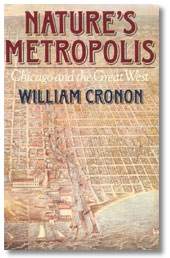Author: Rick Perlstein
Title: Before the Storm : Barry Goldwater and the Unmaking of the American Consensus
Narrator: Kiff VandenHeuvel
Publication Info: Hachette Audio [Originally published, 2001] 
Summary/Review:
In the first of a series of books on modern conservatism, Rick Perlstein explores the origins of the movement in the 1950s and its throughline to today’s Republican Party. According to Perlstein, the Roosevelt and Truman administrations created a consensus around governing with New Deal style programs. This consensus was strong enough that it was unaffected by the election of Republican President Eisenhower. But during Ike’s presidency conservatives who did not agree with the consensus grew vocal and organized.
Perlstein finds the core of this movement in the types of families that own a manufacturing business that employs everyone in a town that feel that increased taxes, regulations, and labor representation don’t benefit them at all. They rail against the liberals who have sold out the country to “socialism” while also opposing the big city corporate types who control the Republican party and chose Eisenhower over their favored candidate Robert Taft in the first place (ironically, the movement they create would allow big conglomerates to gobble up family-owned businesses in future decades). There’s also a youth movement in the 1960s, but not the counterculture, which creates the Young Americans for Freedom organization who also push for conservative values. Considering how many significant right-wing leaders of the past 60 years were born in the late 30s/early 40s, this cohort had great staying power.
This movement coalesces behind department store owner Barry Goldwater who single-handedly flipped Arizona from Democrat to Republican when elected to the Senate in 1952. Goldwater’s organizing skills and confrontational speech style helped him gain support throughout the country. This included the South where white voters had been solidly Democratic since the Civil War but now saw the national Democratic Party taking stronger Civil Rights stances. Goldwater’s insistence that Civil Rights legislation and New Deal programs were a threat to freedom, that Soviet-influenced communism was creeping in everywhere, and that the U.S. needed to be more aggressive militarily including using nuclear weapons won him followers while also terrifying a greater number of people.
The second half of the book focuses on Goldwater’s 1964 campaign for President. It is sprawling in detail and challenging to keep track of all the figures involved in the Republican primary campaign as well as Lyndon Johnson’s administration. It’s refreshing that Democrats in 1964 had no compunction about calling out Goldwater’s extremism and danger, instead of calls for bipartisanship and a “strong Republican Party” that we hear today. The news media was similarly unequivocal about the danger of Goldwater instead of playing “both sides” debates. That dangerous and insurrectionist right wing ideologues have essentially been normalized today is part of Goldwater’s legacy.
Goldwater lost the 1964 election in a landslide with Johnson still holding the record for percentage of popular votes received. But Perlstein notes that in many ways Goldwater won by losing. A speech late in in the campaign by a Goldwater surrogate electrified the conservative movement. The man who gave that speech, Ronald Reagan, will be a key figure of the rest of Perlstein’s series of books.
Recommended books:
- What’s the Matter with Kansas?: How Conservatives Won the Heart of America by Thomas Frank
- Pity the Billionaire: The Hard-Times Swindle and the Unlikely Comeback of the Right by Thomas Frank
- The Reactionary Mind: Conservatism from Edmund Burke to Sarah Palin by Corey Robin
- Democracy in Chains: The Deep History of the Radical Right’s Stealth Plan for America by Nancy Maclean
Rating: ****









